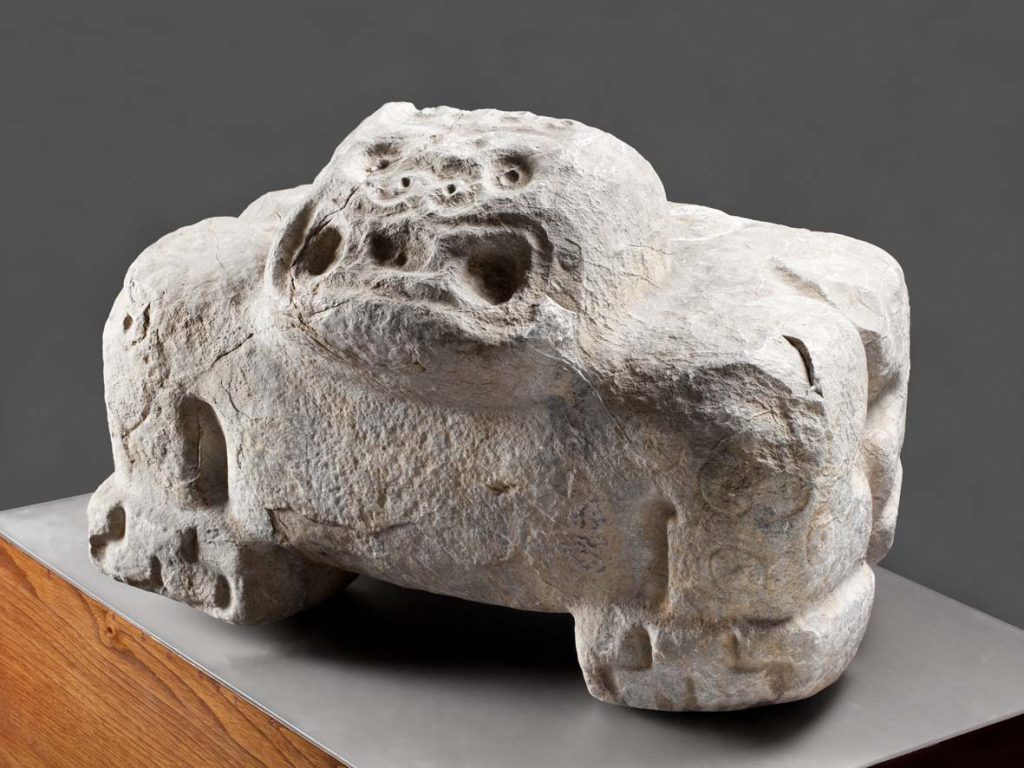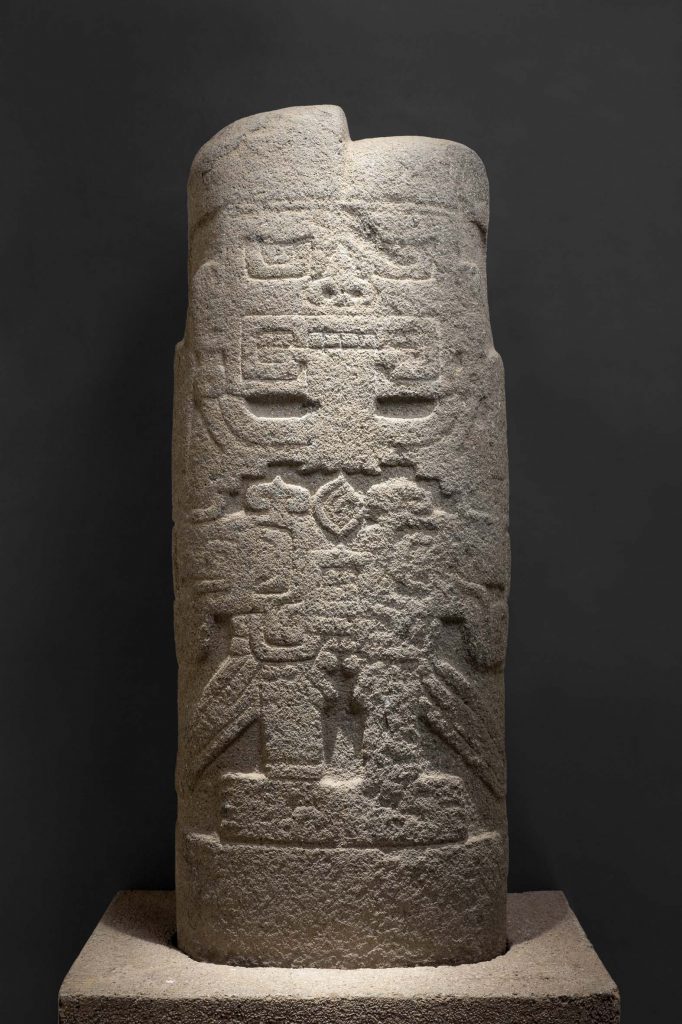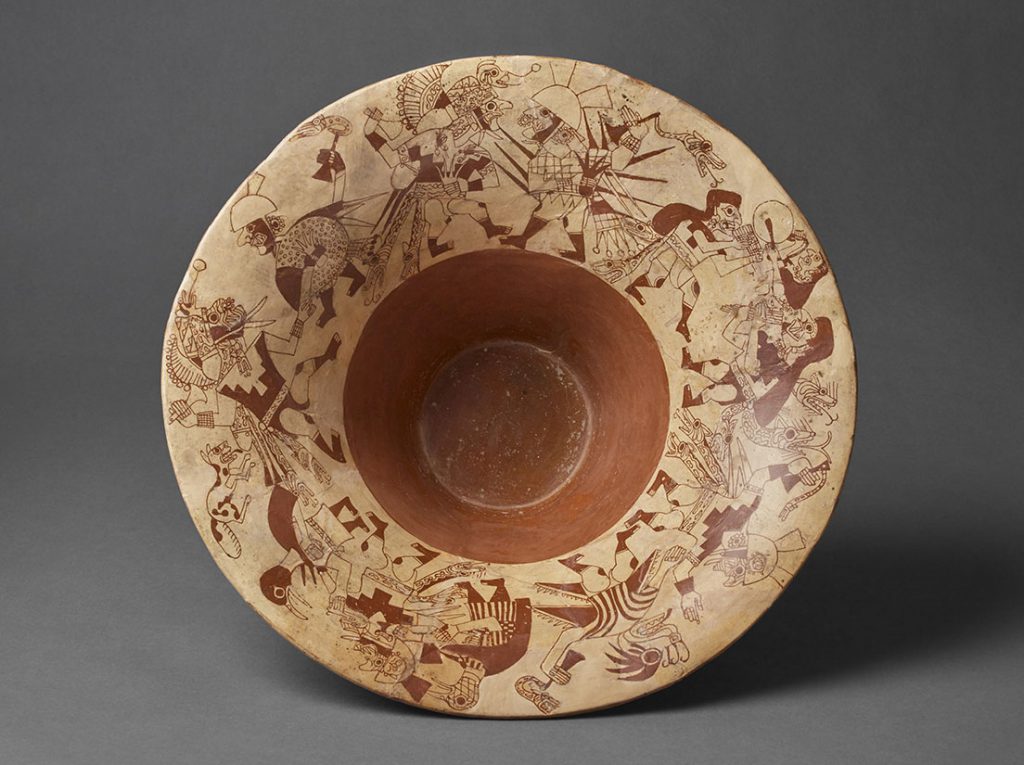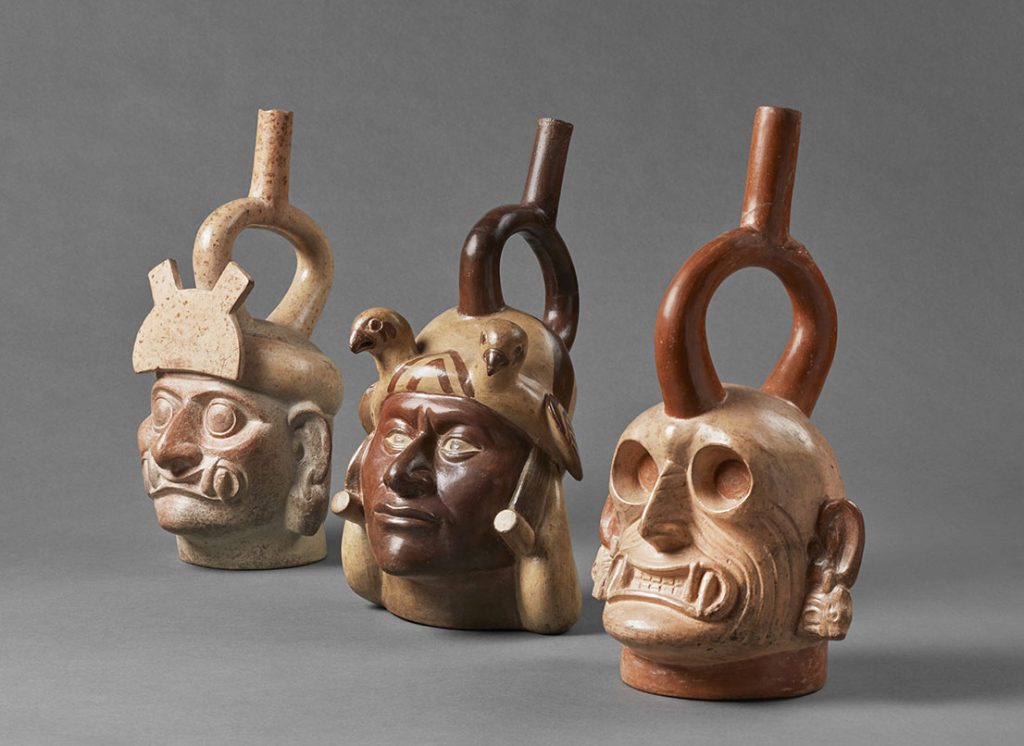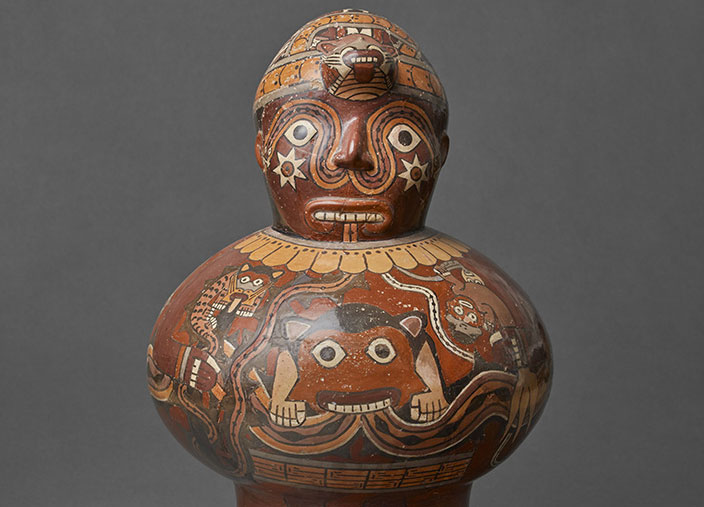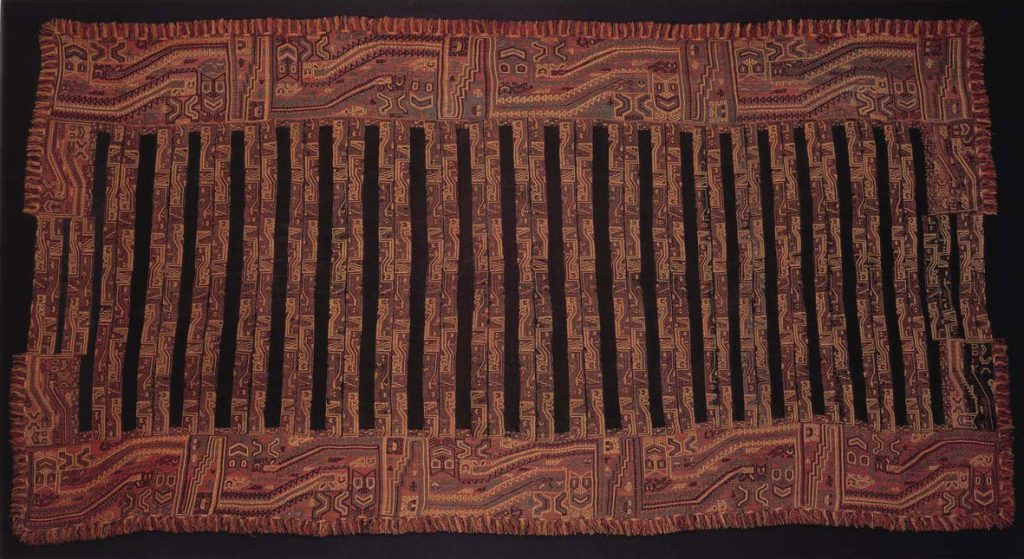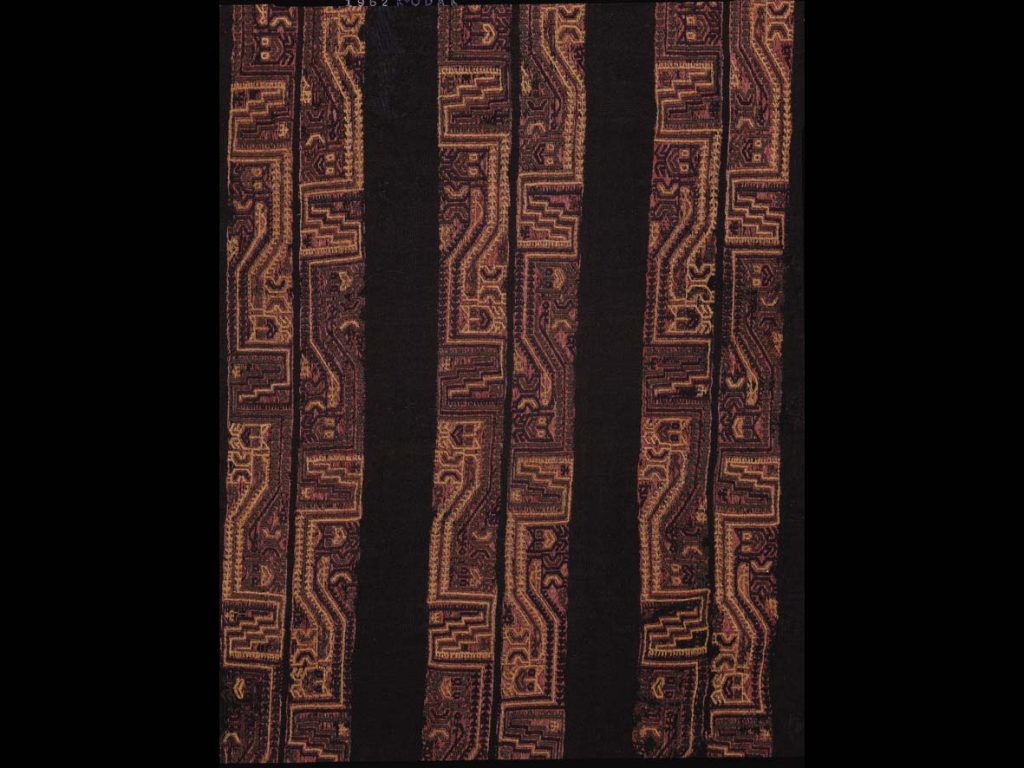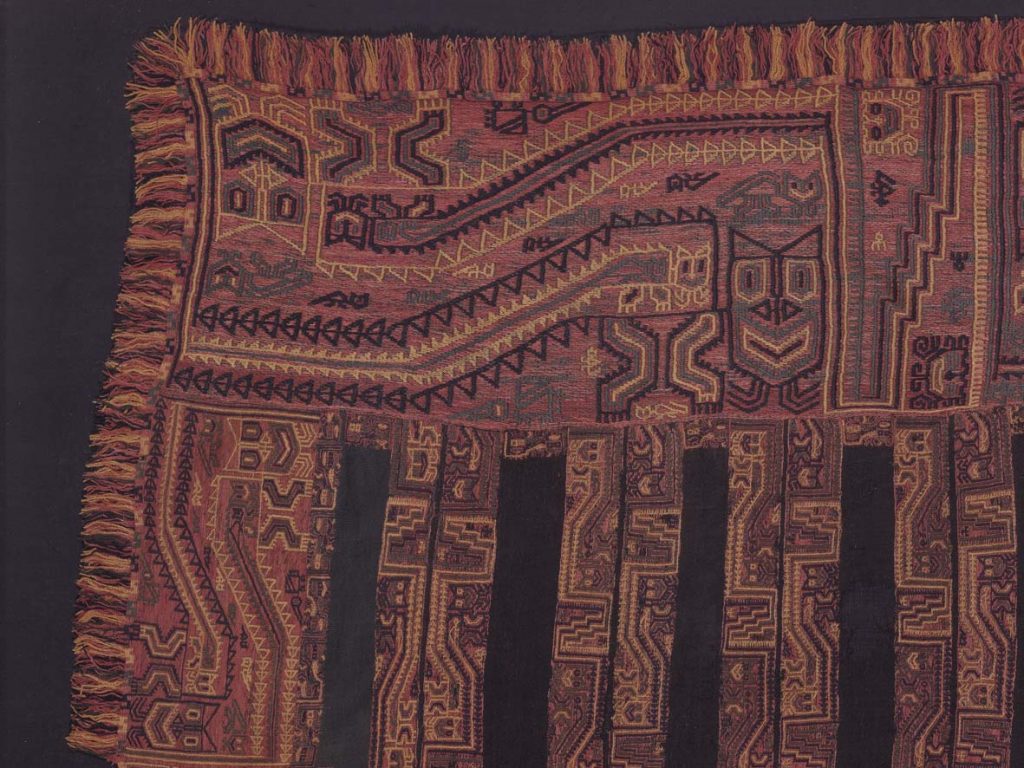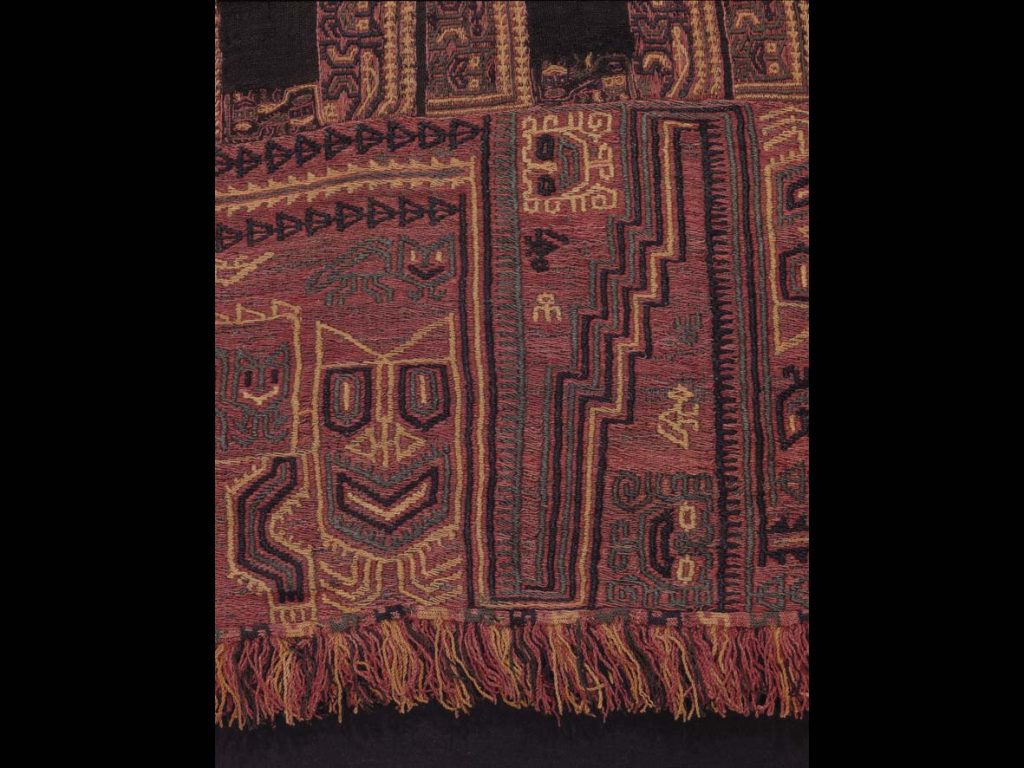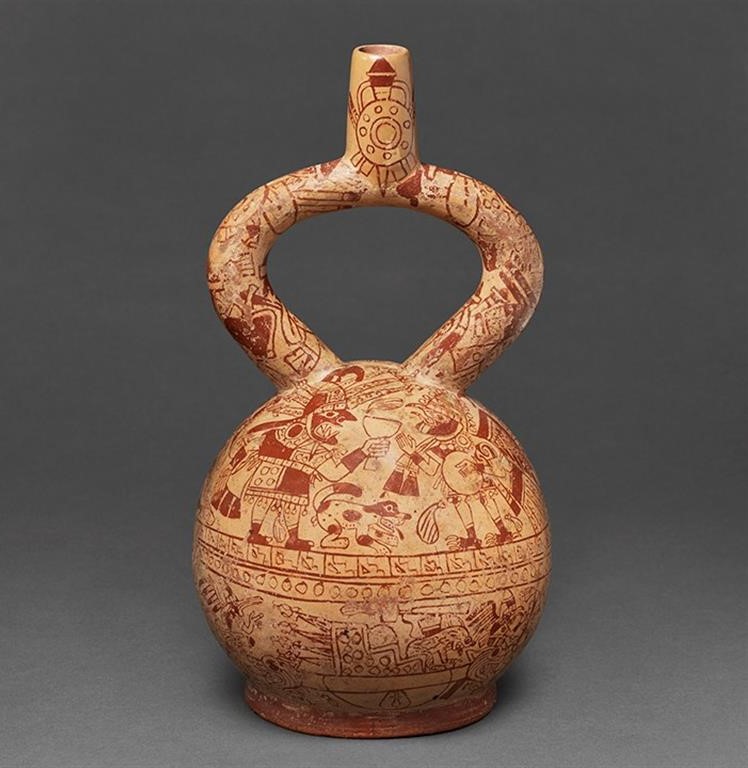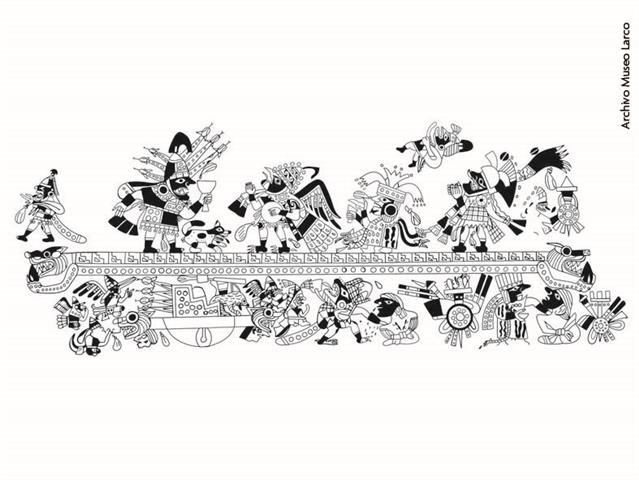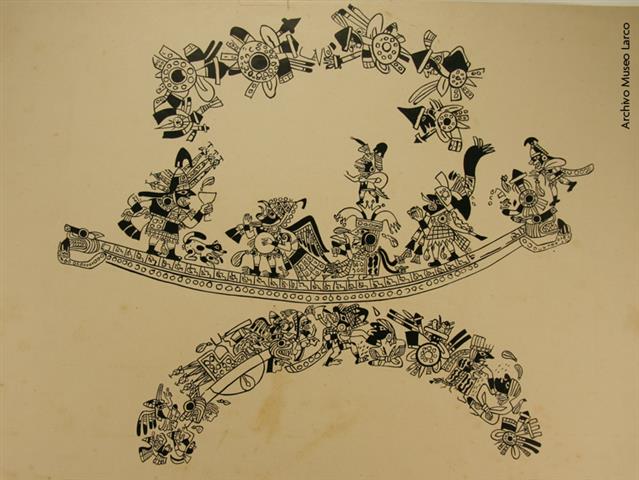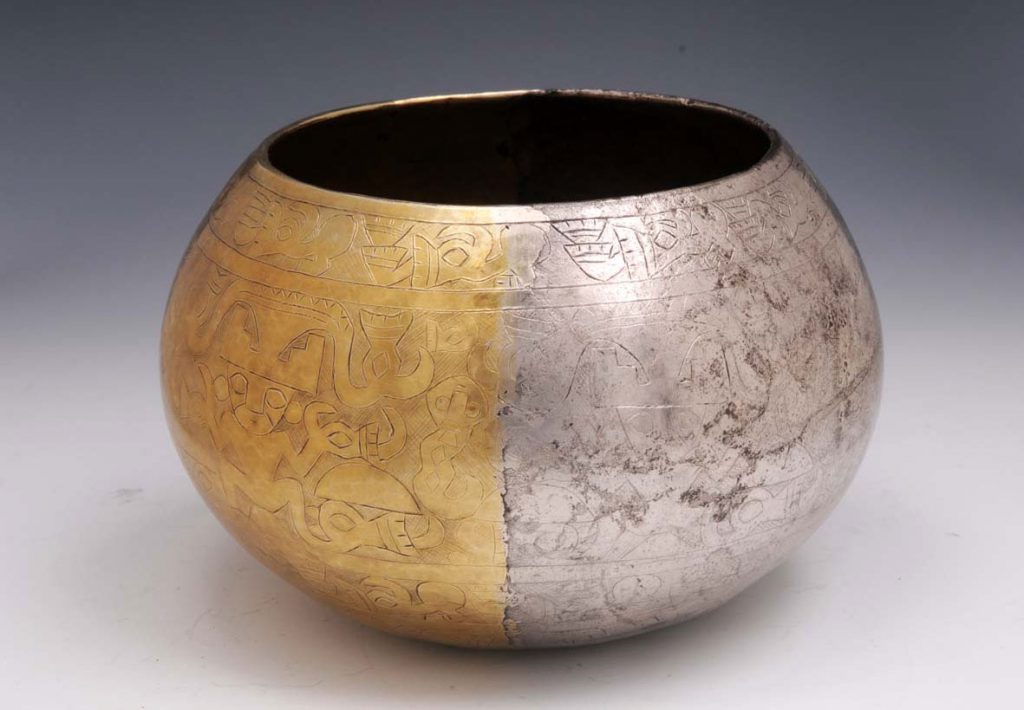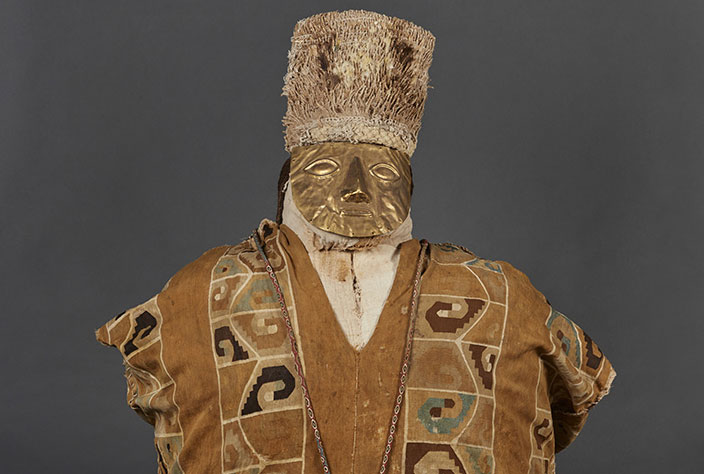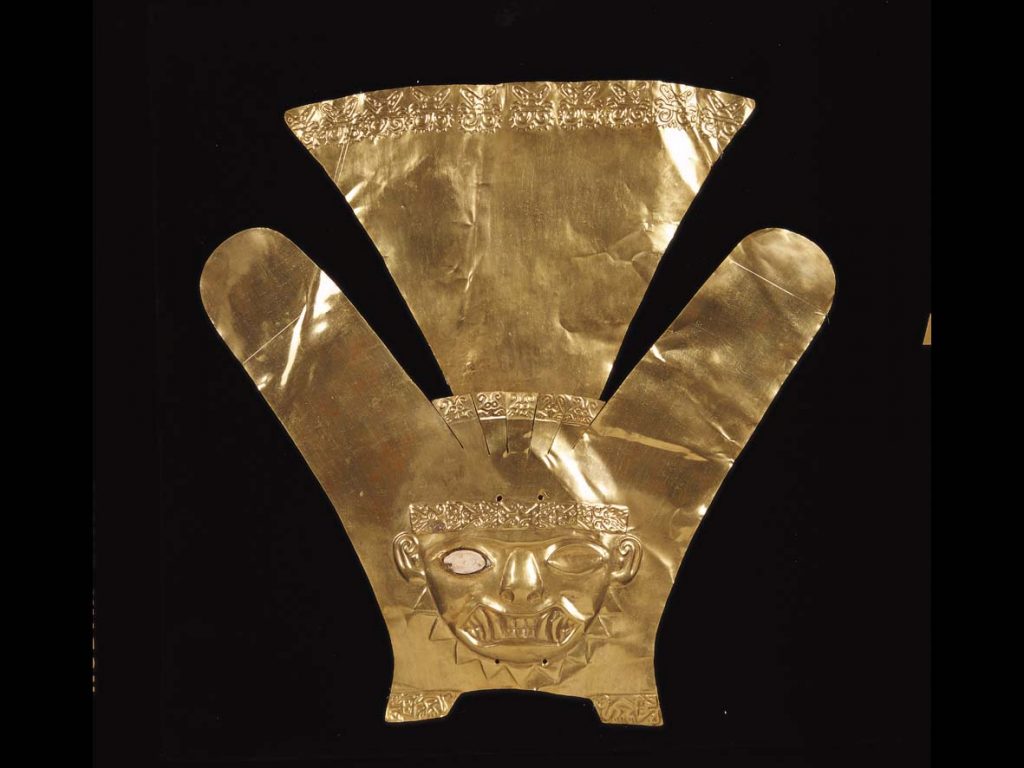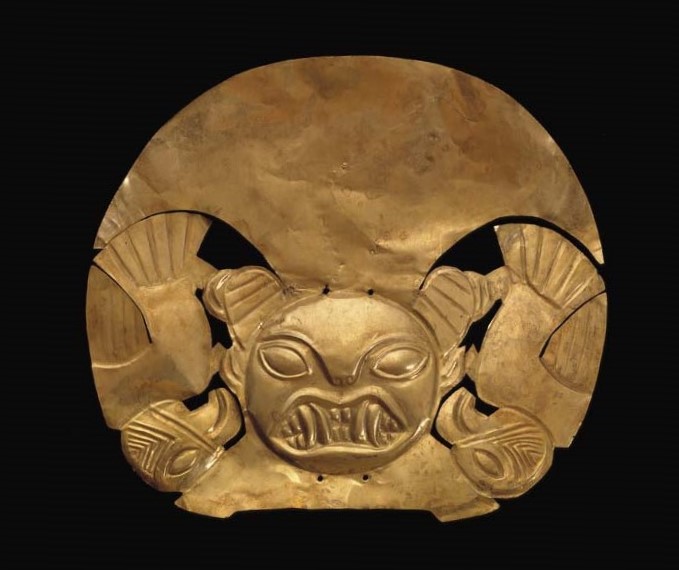Pacopampa Feline
Room 1, Vitrine 2
Stone sculpture
Highlands of northern Peru
Formative Epoch (1250 BC – 1 AD)
ML301346
In the Andean world, the jaguar and puma are major carnivores. These fierce and powerful big cats, which take the lives of other animals to ensure their own survival, symbolize the cyclical transformation necessary for life to flourish in the earthly world.
- This stone sculpture came from the Pacopampa temple, Cajamarca, in Peru’s northern highlands.
- Felines were depicted very early in pre-Columbian art. Some three thousand years ago, stone sculptures like this one were visited by pilgrims in the plazas of many ancient Peruvian temples. .
- The jaguar symbolizes the vital forces that make life on Earth possible: sunlight and water.
- The jaguar represents the sun because it roams the humid lands of the Amazon basin, beyond the mountains to the east, where the sun rises each day.
- The concentric circles seen on this sculpture adorning the jaguar’s body allude to the spots on its coat while also symbolizing water, which arrives from the celestial world in the form of rain and enables life to flourish on Earth.
- Gods and ancestors were depicted with fangs, symbols of feline power.
